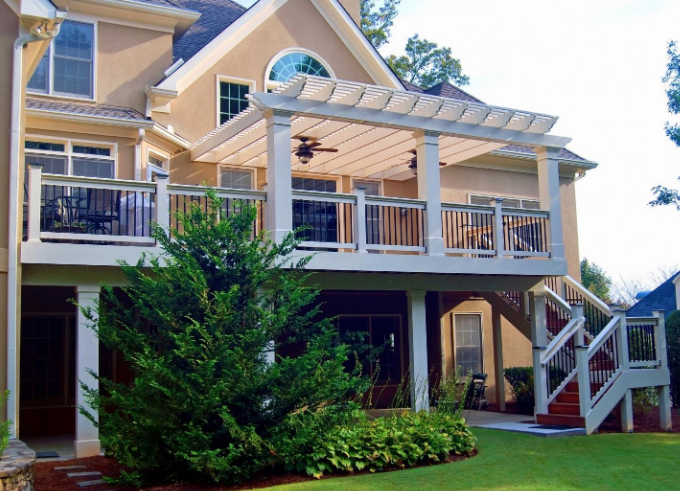Part One of a Series By Bobby Parks
Why Should a Customer Choose You?
When a prospect accepts proposals from three different contractors why should they choose you? What makes you different or better? What benefits do you offer that others don’t and what impressions are you making that increase the chances you’ll get the job? What kind of credibility do you reflect and what kind of risk do you represent? Why would a customer choose you to do the job?
If you’re ranked in the top 50% of contractors in your market the customers decision is likely based on price. If you’re in the lower 50% you’re probably already on your way out of business. Being in the top half puts you in the “average” category as just one of many. Average efforts provide average returns and will not provide financial stability, business rhythm, or consistent profitability.
Creating layers of credibility and working to position yourself to be in the top 10- 20% of your market can provide all of these benefits and more. As a member of this category you’re being chosen for reasons other than price. Most can begin to charge 5% to 15% more than they do now once these simple ingredients are added. In this five part series I’ll share the approaches that made the difference for me in how I grew my business with a focus more on margin growth instead of production growth. This is the simple recipe that I utilized while operating in a very competitive Atlanta Georgia market. It’s a recipe for a simplified approach that allows for a smoother operation and can allow you to charge 5%-15% more than many do now.
Being in the top 10%-20% is not about company size or big fancy jobs. It’s about the quality of a companies’ delivery history, reputation, and capabilities. Its about an established short and long term reputation. Its the perception and image created in a market of who stands out as one of the best and who most would choose if they can afford to use them. It’s those who can illustrate and communicate who and what they are about and back it up with how they perform. It’s for those who want to better themselves and not just go through the motions and be average.
Simple Approach To Business
Unfortunately a lot of good deck builders and remodelers aren’t making the kind of money they want. Many are able to pay themselves a salary each week but have nothing left beyond that at the end of the year. A 5% to 10% increase can change that significantly by increasing net profits. If you could add $25,000 to $50,000 profit on a $500K year by incorporating simple operational elements to what you’re doing now would you do it? Although many believe its too big a stretch to sale that $20,000 job for $21,000 to $22,000, I assure you its not. This recipe is an alternative way to grow your business from a monetary standpoint without adding to the headcount and production.
Rising in the rankings doesn’t have to be complicated as there are simple elements that working together move the needle in your favor. It requires a focused approach of fine tuning communications of your image, brand, and reputation in a market. For some it may require an adjustment in their building philosophy in terms of what they offer and how they deliver it. It’s a simple recipe that requires you to work more on your business than within it.
If You Appear to Be the Same You have to Charge the Same
The key is to not appear to be like everyone else, to create separation from others, to creat excitement with design and options, and to stand out in the right ways. It’s about creating a scenario where the credibility and confidence levels are extremely high and any associated risk using you is zero. Less risk equals more dollars.
If you appear to be like everyone else you’re pricing will have to be similar as there’s no justification for it to be higher. If a prospect is trying to decide who to use for a job and there’s no noticeable separation between contractors it becomes a decision primarily based on price. In their minds the chances for a successful outcome of the project and the risk associated with each of the contractors they’re meeting with are the same so it comes down to who they can hire at the least cost. Competing on cost is a race to the bottom.
Ingredient # 1: Building Philosophy and Messaging
Your building philosophy is your contractor identity and what you as a contractor will be known for. It’s your foundation and the bowl all other influential ingredients are mixed into. It’s the motto of operation that you’ll build from that includes your style of details, products, and process. Once it’s determined it has to be communicated through messaging and through other ingredients that will be discussed in following articles. It’s your elevator speech of what your company does and stands for. All contractors are builders but if someone ask what your companies about, and you have 30 seconds to explain, what is your answer? It doesn’t have to be complicated, just honest and make sense. But whatever it is, it’s what’s recorded in a prospects mind. Simple messaging is used on websites, and when you’re having that first phone conversation with a potential customer. Its one of the first of two impressions you make with a potential customer.
Mine was: “We don’t build that raw wood stained deck and porch that’s accepted in our market. We combine products that we believe will perform and stand the test of time. We design and build projects that look like true extensions of the home and that we know will reflect well on our reputation for years to come.” It’s a simple message but it communicated what I wanted heard in that first 30 seconds when I spoke to them or on the website. Other details about the company can be communicated as the process continues.
What Kind of Projects Does Your Company Deliver?
Quality craftsmanship and customer service have to be a given with any company to even begin to compete. Its like qualifying for a race. You have to achieve this basic milestone before you pursue the checkered flag. Realizing that markets for upside opportunity vary and many contractors are at varying levels of experience or maturity, the goals should be to improve over time with how you operate and what you deliver. Being progressive and not complacent is required.
Questions to ask yourself are: Are your past deliveries helping or hurting your reputation? If you build using lower grade materials does your customer experience buyers remorse after a summer or two? If your customer has a dinner party a year or two later with guest viewing your delivery, what kind of impression will it make? Have the joints opened up and has the decking warped and checked up? Has it weathered out and lost that new look? When they ask who built the job, are these guest going to be impressed enough to give you a call or do you get checked off the list of potential contractors they’d be interested in meeting with? Unless you’ve used material and techniques that stands the test of time and delivered the job to this past customer in a quality manner you’ll never know the conversation occurred.
Where Do You Rank in Your Market?
You as a contractor have to decide where you can best compete and where your best upside potential is. You have to decide if you want to shoot for ranking in the top 20% of your market or just coast in with the 50% group. No longer providing the lower grade options for customers is a big first step. If you want cheap you go somewhere else.
Many never leave their comfort zone but almost all of us need to in order to raise our game and find stability as a business. Otherwise we are just one of many. Higher end details or basic high end standards don’t have to be complicated. The jobs are generally more complex but if you have capability to deliver and price them properly, they can provide not only better profitability but build a much better reputation. The better the reputation, the easier it is to sell. Part of the trick is for you and your crew members to become use to what is considered custom details to the point they become standard details. And jobs don’t really have to be complicated. Offering simple designs along with combining quality products as a standard and not an option will raise you up in the rankings.
Easy Doesn’t Pay
I look at it this way: Whether you’re a contractor or an employee the easier a job is to do, the more people that are qualified to do it, so the less it pays. Your job offerings are the same so the types of projects you deliver immediately separate you or make you the same. What you deliver effects margin, reputation, and brand. Understanding that markets and demand vary, the easier and simpler a project is to deliver, the more contractors have the capability to do it. In most cases these job types offer the least amount of profit compared to a “better and best” approach. You have to decide what you’re building philosophy will be, what you’re comfortable delivering, and what you want your reputation to be in a given market. Again, Its not about the size of a company but more about the quality of a company. This means a combination of an organized process, using quality materials, good communications, and a professional delivery of projects.
Can You Really Charge More?
So would a customer really choose you to do the job when you’re at $31k while another contractor seems to be offering a similar size project at $28k? Would they really pay you 10% more? There are risks associated with any contractor when a customer makes a choice. Often a customer has multiple proposals and it’s the contractor that’s makes the strongest impressions that if price were equal they’d instantly choose. But price isn’t the same so they have to weigh the investment risk element with contractors and cost. If they’re talking with a contractor that’s low in cost but doesn’t show or communicate a strong delivery history of the job types they want, the risk associated with this contractor factors in. Maybe when its all said and done they might have what they wanted but it could be a nightmare. The customer hopes and would like to think they can save money with this lower priced contractor, but hope is a risky decision factor when choosing contractors.
Using a contractor that illustrates multiple layers of credibility with the ingredients that I’ll put forward in the next several pieces removes the risk factor for a customer. Many will not want to gamble and would prefer to make the safe investment with a contractor that they have no doubt will deliver what they want if they’ll spend the $31,000 instead of risking $28,000. What would you do?
Nothing discussed in this series of articles requires a significant amount of your time to implement. Motivation levels vary with contractors so what you do will be determined by your personal makeup.
If you incorporate the simple ingredients of the recipe many customers will be willing to pay you more. They’ll know that if they go with you, there is no risk and their investment is safe versus taking a chance with a riskier contractor. The higher the job investment number the more this applies. So yes many will pay you 10% more to remove the risk of a bad investment. But like any good recipe it takes all the ingredients working together to provide the desired results. Stay Tuned.

Bobby Parks / Instagram: @Bobbyparks007
Copyright Bobby Parks – February 25, 2020



